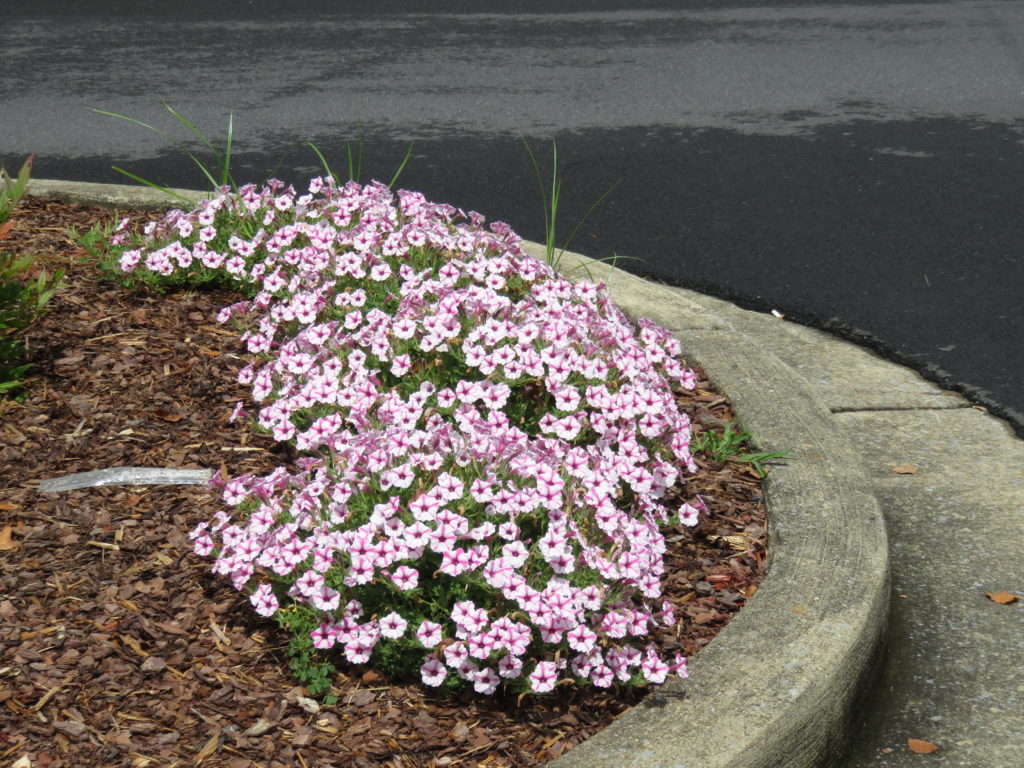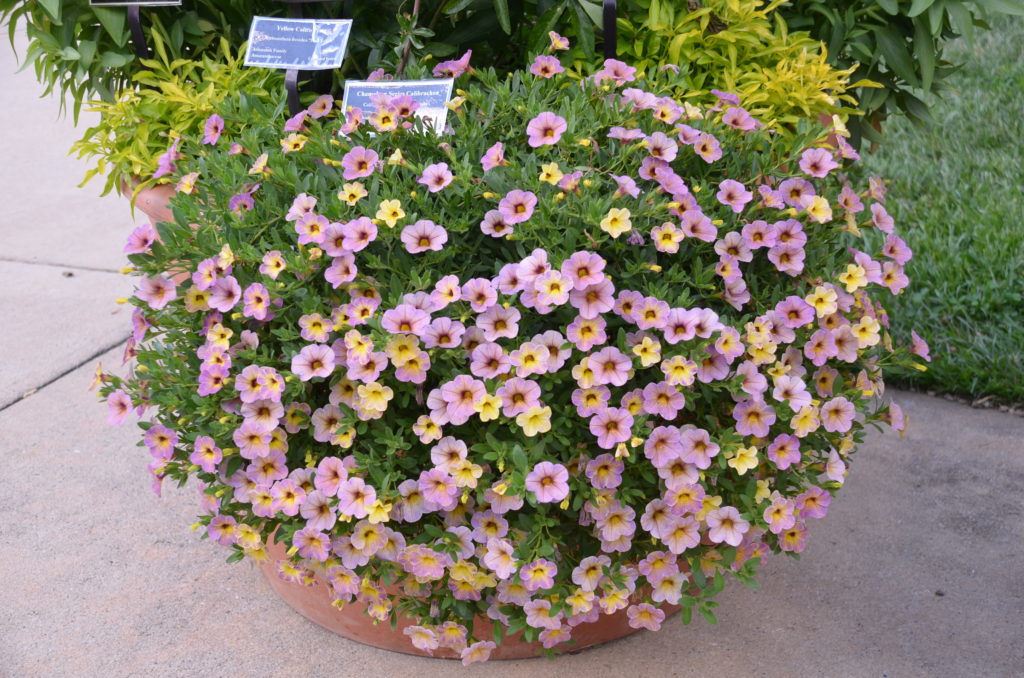
Gardeners have discovered Million Bells* (Calibrachoa x hybrida), a small flowering cousin of the petunia. Million Bells are prolific bloomers and produce one-inch mini-blossoms. They were first marketed to home gardeners in the 1990’s. They’re native to Peru, Brazil, and Chile, and are commonly grown as annuals in the U.S.
Over the past twenty years plant breeders have increased the range of bloom colors, bigger flowers, and improved plant vigor. Plants display a low sprawling habit reaching 12-24 inches in width and 6-12 inches in height. Trailing varieties extend up to 30 inches in length. Million Bells bloom best with at least six hours of sun, and can tolerate partial shade.
Blooms include solid and bicolors, stripes, patterns, and doubles. Million Bells are available in all shades of the rainbow. Plants are prolific bloomers with self-cleaning flowers, so no deadheading needed.

These cool tolerant annuals can be set outdoors in early to mid-spring in most localities – literally during spring frosts until early autumn. Grow them in containers or hanging baskets, or plant in front garden borders and in raised beds. They can be planted in bedding displays providing the amended soil is compost-rich with good moisture drainage.
Occasionally, pinch back growing tips to encourage branching and more flowers. To rejuvenate plants in mid-summer, cutback branches to half their length and fertilize to spur new growth.
General care: Million Bells are heavy feeders and should be fertilized regularly for prolific, continuous bloom. Use a water-soluble fertilizer such as Miracle-Gro™ or Jacks™ every two weeks as recommended, or add a slow-release granular fertilizer such as Osmocote® or Nutricote®. Foliage color looks best when the soil pH is maintained between 5.5 and 6.0. If the soil or media pH gets too high, leaves will turn yellow (chlorotic). Irrigate during hot weather, particularly containers which can dry out quickly.
Overwatering can lead to root rot. Heat stress can make plants susceptible to spider mites, and aphids. Million Bells are not particular favorites of deer, but are not deer resistant.
Million Bells combine well with most annuals. They are also great container fillers with perennials such as coral bells (Heuchera), sweet flags (Acorus), or sedges (Carex).
*Million Bells® is the common name for Calibrachoa, a trademarked name of Ball Horticulture, Inc.

 Posted in
Posted in 
